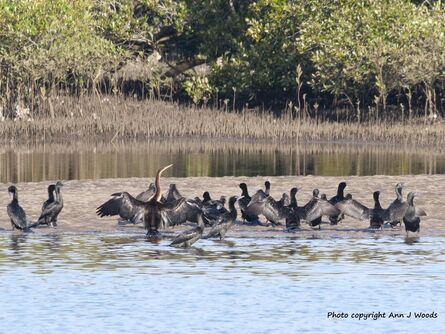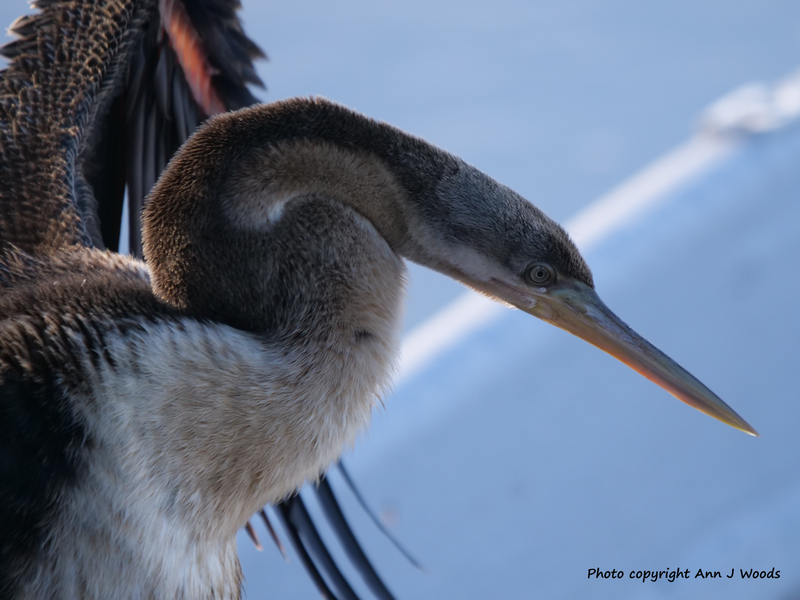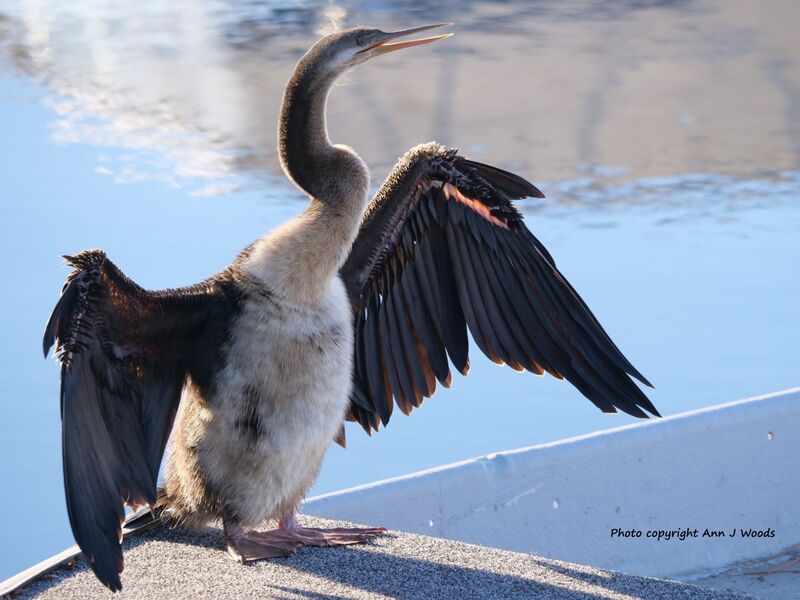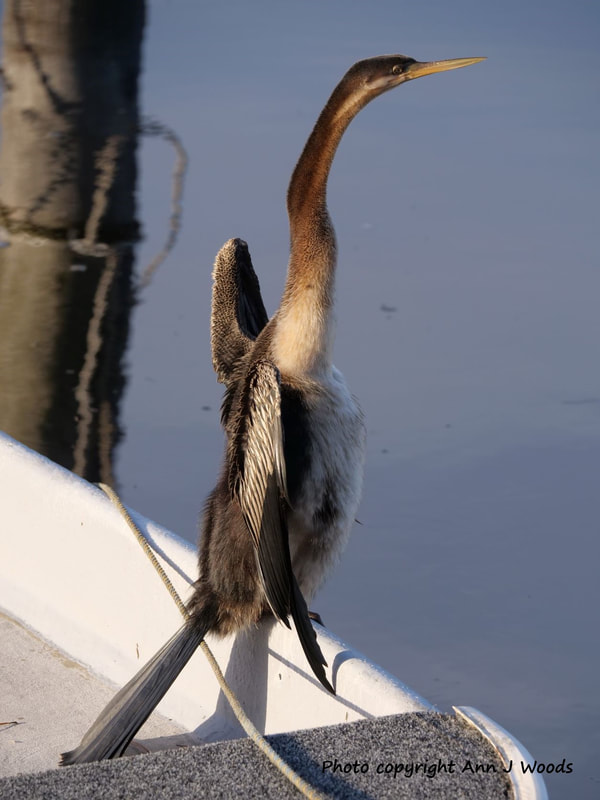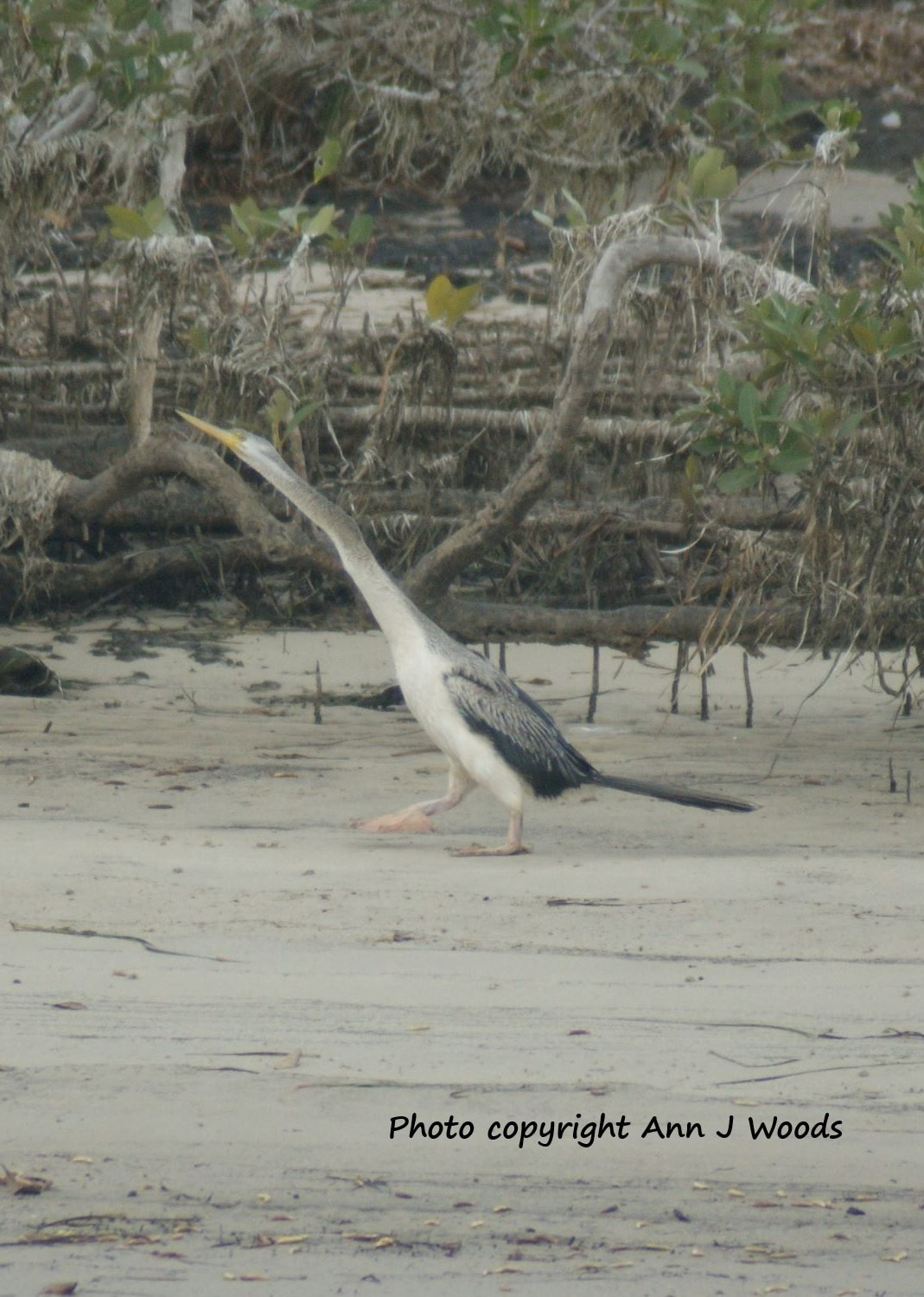Also known as Australian darters or snakebird darters - so named for their long, curved necks that look like winding snakes moving on the surface of the water while the rest of the darter's body is submerged while swimming
Darters have been observed locally along the Myall river’s edge and drying their wings on the jetties at Tea Gardens.
They are seldom seen here on the beaches, though they have been observed fishing elsewhere near calm seas.
While a solitary bird among its own kind outside of breeding time, darters often keep company with a different family of bird - cormorants.
What is the difference between a darter and a cormorant?
Distribution
Darters range is mostly limited to the tropics and subtropical zones
Because of their high numbers around inland waterways from Tennant Creek in the Northern Territory, across to Broome in WA and south to Perth and East to Esperance and Adelaide in SA, their populations is considered stable.
However they are less common here on the East Coast where the subtropical and temperate zones merge.
Because of their high numbers around inland waterways from Tennant Creek in the Northern Territory, across to Broome in WA and south to Perth and East to Esperance and Adelaide in SA, their populations is considered stable.
However they are less common here on the East Coast where the subtropical and temperate zones merge.
Distinguishing features
Male :
Dark brownish black with glossy black upperwings, streaked and spotted white, silver-grey and brown.
The strongly kinked neck has a white or pale brown stripe from the bill to where the neck kinks and the breast is chestnut brown
Females and immatures:
Grey-brown above, pale grey to white below, with a white neck stripe that is less distinct in young birds.
Dark brownish black with glossy black upperwings, streaked and spotted white, silver-grey and brown.
The strongly kinked neck has a white or pale brown stripe from the bill to where the neck kinks and the breast is chestnut brown
Females and immatures:
Grey-brown above, pale grey to white below, with a white neck stripe that is less distinct in young birds.
|
Outside the breeding season, these darters can travel over long distances of 2,000 km -1,250 miles or more. Australian Darters are threatened by loss or destruction of their habitat, such as drainage of wetlands, extraction of groundwater, increase of salinity, clearing of vegetation and fires. Click the link below for a fascinating video on a juvenile darter in SA https://youtu.be/qX0Ea8_R9CU |
